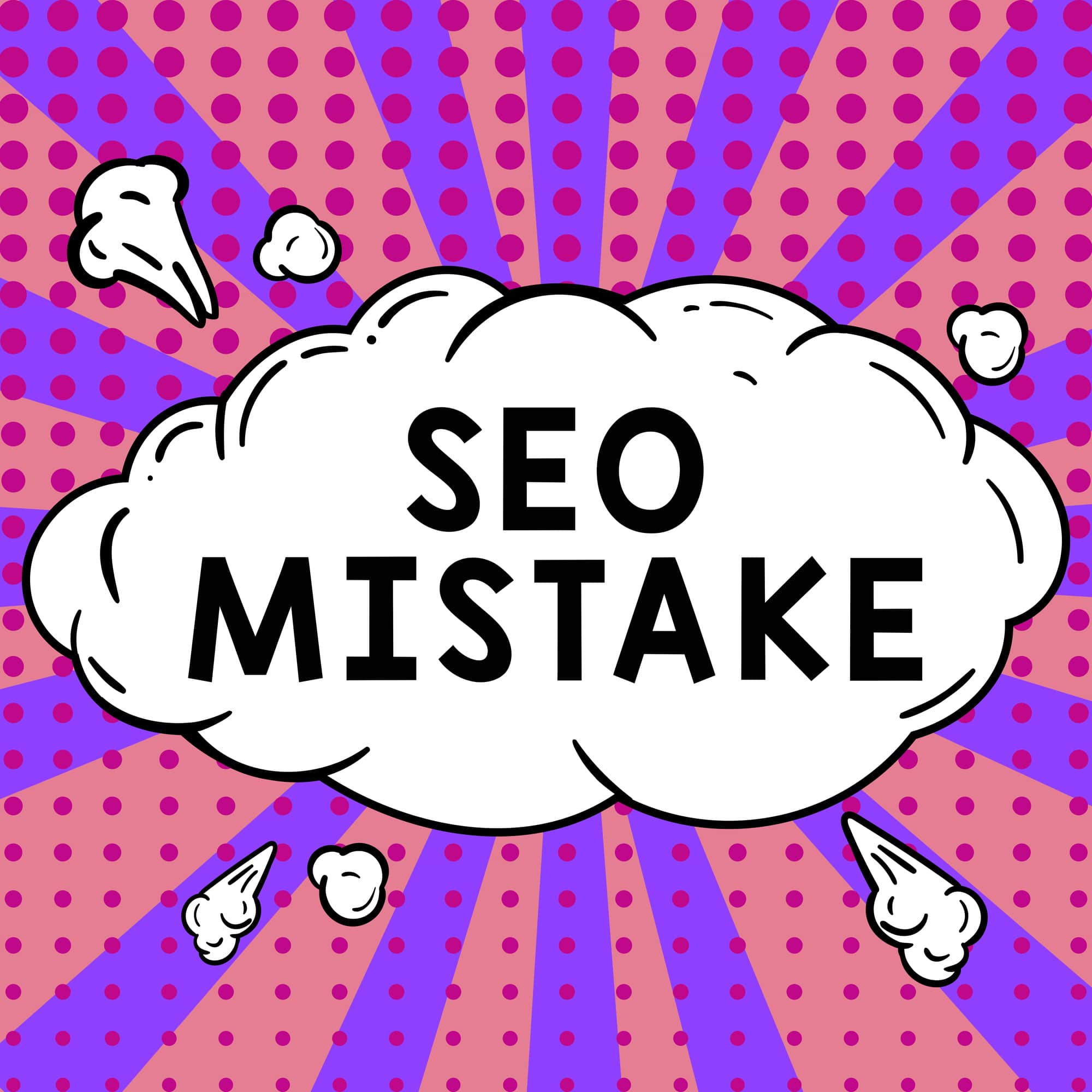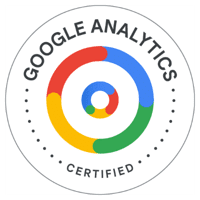Do you want them to link, like and share your content?
Listen to Dan Kaplan, co-founder of periscopeUP, explain how a user-centric vision can help optimize your web site and get it to achieve your goals. In this interview with marketingoptimization.tv’s founder Alex Harris, Dan reveals many of his secrets to using content to get free exposure — for example finding popular posts and repurposing them in infographics, prezis, or slide shows, then asking those who shared the original to share your content as well. Learn why topics come before keywords and why Google Analytics only matters when it pertains to conversions. Dan teaches you effective web marketing efforts to position your content to improve the lives of your audience.
Video Transcript
Alex Harris: Hi, and welcome to Marketing Optimization by Alex Design. I’m your host Alex Harris and today we are chatting with Dan Kaplan. How are you doing Dan?
Dan Kaplan: Hi Alex, hi everybody, thanks for having me.
Alex Harris: Thanks for coming on the show. Dan is the Co-founder of Periscopeup.com and we are talking all about creating great content that gets engagement and gets shared. To get started I like to ask Dan, what is your definition of optimization and why is it beneficial?
Dan Kaplan: So at PeriscopeUP we define optimization as getting a website to achieve the client’s goals. So really there are two parts to that, the first part is getting a website high up in the search engine so that it gets more traffic or more relevant prospects to the site, but there is a big important second part of that which is getting those visitors, those prospects to take your desired action to click, call, or buy. So optimizing for people is just as important, if not more important, than optimizing for search engines.
Alex Harris: So, really great perspective, and I love talking about this content because so many people are just focused on getting listed in the search engine rankings, but you know it doesn’t really matter what content that they produce there. So tell us as we get started tell us a little bit how you guys got started at PeriscopeUP.
Dan Kaplan: Sure, thanks. So about five years ago my business partner Eric Kronthal and I found ourselves in an opportunity where we could start a business, it’s something I had wanted to do back since I started in internet development in 1995, kind of dates me, I encoded my first website on Netscape. But something I always wanted to do and when we were looking at business opportunities, I have a deep background in web development built and promoted over 100 websites, and Eric was one of the early guys at advertising.com. And we are looking around business models we decided that optimization was a good place for us to be in because it brought together all of our talents but more important we felt that search marketing was the best kind most effective kind of marketing, internet marketing out there because with search marketing you are already trying to promote yourself to people who have already expressed an interest in your products or services. So you are further along in that buy process, people when they sit down and Google they are expressing an interest in your product or service, and they are a little bit closer to making that purchase decision so it’s a little bit easier to get them to convert.
Alex Harris: Yeah, it does take that effort to really create the good content to actually push them over and actually get them to convert. Let’s just go ahead and just jump right in to some examples and you can walk us through some of that great content you are creating.
Dan Kaplan: Okay, so if you – clients often ask us for help in creating engaging content. Well, what does that mean, engaging? They know that Google rewards engaging content but how do you really define engaging? And because Google can only really look at electronic signals, we define engaging as a content that elicits links, likes and shares. This is the off page signals that Google looks at in ranking a website, so any content that we can actually create that’s going on its own increase these links likes and shares, that’s by our definition engaging. So the question is, how do you do that? Well, first step is to research obviously what content people are interested in, what do they want to know? When you sit down to Google you are doing a search for information or you are looking for a product and essentially you are trying to solve a problem, you are trying to improve your life, so inherently this experience that people have with a search engine its all about them, or as I like to say, its all about me.
So we try to encourage our clients to start by researching content that – researching topics that people want to know about and then developing that content that’s going to help people improve their lives, so that its going to therefore be linked liked and shared. And I can give a good example of that of one way to create content that’s not engaging verses content that is engaging with two websites. One is cuisinesolutions.com, beautiful website, great product, they make Sous Vide which is high end gourmet foods that are vacuum sealed in packages and mailed to you, and all you have to do is boil it. It is delicious stuff I’ve tried it, great product, great website. And I’m going to compare that to another website called paperchef.com, and they are in a similar space they make paper for cooking with baking and cooking fish and chicken.
And I would like to take a quick look at their two approaches to content and show how we believe one of them is engaging, or more engaging, than the other. So if you are to take a look at cuisinesolutions.com, the first thing you’d see is that the content really is all about them, it’s all about the product. It starts, their website says perfect right out of the bag every time. It starts with our world class chefs, so they’re promoting their chefs as the main selling point for the food. Great branding strategy, I’m not in any way knocking their branding strategy, it’s a beautiful site and I’m sure from a branding perspective it is very effective, but it’s all about them. If you look even at their navigation, their navigation is set up as our products, our chefs, our industries, and it’s all about them.
Look, the content is very well written, that’s not what I’m saying, I’m just saying that is not going to elicit those links, likes and shares as much as this other site. So now let’s take a look at paperchef.com, and immediately from the navigation you’ll see that its more user centric, it’s more about me. They have recipes as one of their navigation items; they have articles; they have videos, and all three of these navigation areas bring you to content that is helpful to me as a chef. Its going to be improve my life, the recipes show me how to use their product but in a way that I’m using their product to make my life better, to make me a better cook, better parties et cetera. And this kind of content, these recipes, these how to articles, these videos that show you how to cook, how to be a better cook — this is the kind of stuff that gets posted on Twitter, it gets shared on Pinterest, it gets posted to Facebook, it gets the links, likes and shares.
Bloggers might link to it, and this is because it’s inherent, we believe, more about me, about the users, and it’s content is going to help me improve my life. It’s utilitarian. This is the kind of stuff that we believe is engaging.
Alex Harris: It’s really interesting, the two layouts are obviously they are definitely competing in their content. And if you are not watching this on video you’ll see that the cuisine type of page it has a big banner at the top and then it kind of goes into sub headlines and different content blocks. Compared to the Paper Chef, it’s a little bit its more open. Its definitely more visually appealing, and its not focused on the chefs, it’s focused on the food.
Dan Kaplan: One of the things that we do is we’ll try to find, we think about topics not necessarily medium. So if we write a blog post that gets 50, 100 shares, a lot of inbound links to it, we realize that we’ve struck a nerve, and we found a topic that is of interest to the audience. And then what we’ll do is we’ll take that topic and repurpose it into other medium. We will take that blog post to maybe make that into an infographic or take that blog post and make it into a slide share or a prezi, and be able to see the same thing in a different medium, not everybody learns in the same way, some people are readers, some people are oral, some people are visual. So when you find something that is popular that’s already getting a lot of links likes and shares, repurpose that in another format, and that also opens you up to a lot of other distribution channels, if you now have a prezi version or a video version of a blog post, that opens you up to You Tube and to some of the other video sharing sites and you can also engage visual learners on social media.
And if I can now give you a tip, something that we use as a shortcut to this. One of the things that sometimes that we’ll do is rather than reinvent the wheel, we’ll go out and find a blog post in our industry that’s really popular and its got already a lot of links likes and shares to it. We didn’t write it, somebody else out there did, and what we’ll do is we’ll repurpose that — maybe take a blog post and make that into an infographic or video and put that up on our clients website, give the original author full credit – not trying to steal or plagiarize anything – and then reach out to the original author and say, “Hey we liked your blog post so much we made a visual of it,” and then well – this is the kicker – “Please consider sharing that with your audience.” And that gets – the original author is going to love to have that opportunity to share with their audience some fans work, if it’s done right, respectfully and properly and they get full credit for it. So we are not thinking about links for links sake, we are thinking about getting that content disseminated out to where a business’s prospects are spending time online and use that content to draw people back in.
Alex Harris: That’s a definitely a great tip for sure. Now I like to provide to my audience some value of how they can get the best ROI from the content that they create. Now you talked about links, likes and shares, what other type of goals do you really focus on when creating this type of content, are there specific KPIs that you measure?
Dan Kaplan: Sure. But before I answer that question, let me say it’s really tough to measure the dollar value or dollar generated from any single piece of content, it’s just really not a possible as far as we know to do that. But we are a big fans of Google Analytics, we are Google Analytic certified, so to us the only KPI that really matters is conversions or goals as defined by our client. So we are going to first of all, first and foremost, make sure their goals, and to the extent possible, goal funnels are set up properly in Google Analytics, so we are properly tracking conversions. And then what we can do is when we look at organic traffic in Google we can use the filter to filter out brand searches. So we are taking out people who already know what the company’s name is and we are really just looking at organic traffic that came in from key words that are not that branded the brand name.
So that gives us a sense of the traffic that’s being attracted to our site from our content. And then what we’ll do is look, filtering just that organic number and the content, we are going to look at the conversions. We are going to look at which blogs led to a high – not just higher engagement or more time on site – but really at the end of the day people came into the site from a certain piece of content that they actually end up converting, did they click, call, or download. So the other thing that we do to measure the value of this content is in Google analytics under conversions we look at assisted conversions. We look at also the attribution, the model comparison tool, because what that tells us is all the different touch points that each of the channels had in bringing a conversion to us. Maybe the first time the user came to the site was to organic, second time was to pay, the third time they knew what the url was so they typed it in directly. and that let’s us apply a certain value to each of these channels towards the conversion. We don’t like giving 100% credit to the last touch, because somebody may have came in through social media and then they searched on us and search is getting all of the credit for the conversion.
Alex Harris: Now as you – I know in Google Analytics so much has changed just really in the last year, are you guys doing the social goals too? I know you can now create these goals individually for social specific, have you guys experimented to that?
Dan Kaplan: Absolutely, in a big way because not just for the conversion standpoint, but we know that Google at least is giving more lift to social signals, that’s why I say links, likes, and shares. The likes and shares part, and particular Google Plus, is very important, something that we put out on our blog or clients blog or twitter, we also replicate that on Google Plus because we love to see those Plus ones. But with looking at the social channels in Google Analytics, that helps us sort of judge not just the conversions but also are we getting those kind of signals that we know Google likes.
Alex Harris: I mean there is so much to do in there now, I mean I’ve been using Google Analytics since the very beginning, and I want to know then I’m like my God there’s another tool I have to learn, it’s just changing really so much. So I like to –
Dan Kaplan: Can I tell you something that we like to use, although it’s a little bit less effective now that they are sort of hiding the keyword data. You make a customer port – this is great for organic – make a customer port that shows you the key word that somebody came in on, against the landing page that they landed on, against the bounce rate. You get all three of those statistics for – when you look at them together what does that tell you? That tells you for your organic traffic which keywords people are coming into which page, and what’s the bounce rate on that page. If the bounce rate is high for that keyword landing page combination, you know you got something wrong, you are missing something, so that’s a good page to optimize, or maybe it’s optimized for the wrong term.
Alex Harris: Absolutely. That’s actually one of my main things that I go in to from new clients, I go in I figure out if the top landing page is organize and by bounce rate, I know if there’s driving a whole bunch of traffic to that site and 90% of the traffic is leaving obviously that’s one of the best place to start for sure.
Dan Kaplan: Another thing we love to do with Google Analytics to help us identify topics to write about is site search – if the user has, if your website has site search on – if your website has a search box, hook up site search in Google Analytics are tracking what are people asking you they want to know about? Great way to come up with topics. Give them what they want, start with what they want.
Alex Harris: Absolutely. Now I like to give my audience definitely some practical advice that they can do on their own sites. What would be some of the top tips for them when thinking about creating their own content, what would you be telling your clients to do as well?
Dan Kaplan: Great question is something we talk about all the time. So first of all, know your audience, know what they want. Do the research, look at the groups, look at the Linkedin groups, the Quora questions. Look at the forums in your industry, what do people want to know? Give them what they want, because if they are searching on it, you might as well have them landing on your site.
Next thing I would say is think about the keyword, identify the keyword before you begin writing. Give that keyword to your writer just so they can work it naturally. Work it once in the title, once in the description, once in the first paragraph, no more than that, don’t do keyword stuffing, don’t worry, don’t try to overdo it. But be aware of the right keyword to try to target – and just as an aside – we look at three things when we look at keywords. We look at search volume, competition and most importantly relevancy. The keyword has to be the right keyword for the topic, if its not the keyword that reflects the topic, change the topic or the keyword because they have to be perfectly aligned. What are people searching on to find this thing? That’s what you want to work into your keywords. And then the next thing I’d say is, make it about me. Make content that’s going to help me make my life better. We have a client that does auto refinancing, so we are working out this whole library of content about everything you need to know about refinancing a car. Just give me those tools, those widgets, the posts, the videos that are going to help me make my life better and use your product in a way that’s going to make my life better. Those are probably the three things that I can think of that are going to help drive more organic traffic.
Alex Harris: I love it, its providing value, targeting the right keyword and making sure that you are writing for the right audience, those are definitely –
Dan Kaplan: Right, but I will say there’s one other thing. Your job is not done once the content is up there, you got to get it into the hands of your prospects, the people that are going to consume it, wherever they are spending time online because these are the signals that Google looks at, but also you want to attract more people to your website. So what you should be doing in disseminating your content is making a list of where people spend time online, think about those, think about those forums, think about those blogs, think about social influencers, people on Twitter who have 100,000 followers in your space, and think about how you can make them look good. Think about finding those influencers and then working on building a relationship that makes them look good by disseminating your content. Give them content that they may want. And you can see what people are sharing on a Twitter, somebody’s Twitter account influencer. If you can give them something that’s going to make them look good and help their audience, and when you pitch to them say, “I really think this will help your audience, it’s not about me.” In this case its about making them look good and then and sometimes create custom content just for them, but get those influencers to share your stuff. You are taking advantage of an existing network, and you got to give to get too, there’s always that part of it – you know – I’ll help you if you help me kind of thing.
Alex Harris: Yeah, no I love it. Let’s close by telling people how they can find out more about you and persiscopeup.com.
Dan Kaplan: Sure, great, thanks so you can visit periscopeup.com. We got a lot of great resources on our blog, we just put up earlier this week, in fact, we put up a blog post about local SEO and the process that we use. We are very open we put our stuff out there.
Alex Harris: Perfect, thank you Dan.
Dan Kaplan: Hey, thanks a lot.
Alex Harris: Thank you for watching the marketing optimization podcast with Alex Designs, please remember to subscribe to all the videos in my YouTube channel. Thank you.







